#Funeral of John F. Kennedy
Text
"Thank you Mr. President"
Jackie Kennedy's letter to LBJ less than 24 hours after burying JFK

When Lyndon Baines Johnson was sworn in as President on board Air Force One at Love Field in Dallas, Texas on November 22, 1963, Jackie Kennedy was standing next to him, her pink Chanel dress, white gloves, and bare legs smeared with the blood and brain matter of her assassinated husband. Traumatized and almost certainly in shock, Jackie wanted to support the new President and new First Lady as power was officially transferred in the same solemn ceremony that has always marked such an occasion in American History. As the Presidential airplane left Dallas and returned to the nation's capital, Jackie sat in the back of the plane with the coffin containing her husband's body.
Despite her deep personal loss, her traumatic experience, and her obvious physical exhaustion, Jackie threw herself into planning President Kennedy's funeral as soon as she returned to Washington, D.C. Jackie was sensitive to the needs of the country and protective of her husband's legacy. When she arrived at the White House, she requested information about the exact specifications of Abraham Lincoln's funeral after he was assassinated in 1865. Even though it was the middle of the night, Kennedy staffers went to the National Archives and the Library of Congress to research the Lincoln funeral and Jackie helped make plans for the pageantry that would commence over the next few days. With a few minor exceptions, JFK's funeral was nearly an exact replica of Lincoln's funeral almost 100 years earlier. The effect was monumental. Kennedy's funeral will always be remembered as a dignified, iconic moment in our nation's history.
As Jackie Kennedy prepared to bury the 35th President, Lyndon Johnson consumed himself with becoming the 36th President, continuing Kennedy's work and leading the nation through the darkness of the assassination and its aftermath. When Air Force One landed at Andrews Air Force Base on the night of November 22nd, the Secret Service urged now-President Johnson to take a helicopter directly to the White House. Johnson immediately vetoed the move as he thought it would disrespectful for him to land on the South Lawn of the White House (as Presidents regularly do) while Kennedy's family still lived in the building. When LBJ arrived at the White House via motorcade to begin his work that night, the new President went directly to an office in the Old Executive Office Building rather than working out of the Oval Office.
Over the next few weeks, President Johnson extended many kindnesses to Jackie Kennedy. LBJ and Jackie had always had an extremely close relationship, and Johnson never forgot how kind Jackie had been when LBJ was Vice President -- a depressing time for Johnson due to his lack of power and influence. During his Vice Presidency, Johnson had experienced many problems with members of Kennedy's Administration, but was always treated very well by President and Mrs. Kennedy.
The Kennedys had two young children who had just lost their father, and the first thing that LBJ did as President was write two letters to President Kennedy's children to read when they were old enough to understand them. When JFK was elected President, the Kennedys hoped that their daughter Caroline would be able to attend a normal school with children her age. When it became apparent that the logistics wouldn't allow that, a room was prepared at the White House for Caroline's teacher to hold class daily. When JFK was assassinated, LBJ insisted that Caroline's class continue using the White House for classes as long as Jackie wished. In fact, LBJ urged Jackie to continue living in the White House throughout the entirety of his term. Jackie moved out within a few weeks, but she appreciated President Johnson's offer.
What Jackie Kennedy most appreciated, however, was President Johnson's presence at John F. Kennedy's funeral. On November 25, 1963, the entire nation stopped and world leaders gathered in Washington to bury the slain President (one place that the nation didn't stop was Dallas, where JFK's assassin Lee Harvey Oswald was shot and killed as he was being transferred to another police facility). Kennedy's funeral was historic and emotional. The enduring image is of John F. Kennedy, Jr. -- celebrating his 3rd birthday on that very day -- stepping forward to salute as father's flag-draped casket passed by.
Another stirring image from that day was accompanying President Kennedy's funeral cortége. As Kennedy's casket rested on the exact same caisson that carried Abraham Lincoln's casket, a remarkable procession of some of the most famous, powerful people in the world followed behind it. Led by Jackie Kennedy and the slain Presidents two brothers, Robert F. Kennedy and Edward Kennedy, scores and scores of political leaders, diplomats, monarchs, and more trailed the casket, marching in complete silence other than the sounds of their feet on the pavement. Dozens upon dozens of countries were represented -- not just by ambassadors or minor officials, but by Kings, Queens, Emperors, Presidents, and Prime Ministers. When one looks at the photos, our eyes are immediately drawn to the majestic strength of Jackie Kennedy leading the procession. If the faces of those behind her are scanned, they reveal legendary leaders such as Charles de Galle, Haile Selassie, U Thant, Golda Meier, King Baudoiun I, Lester Pearson, Willy Brandt, Queen Frederica, Eamon de Valera, Prince Philip, Sir Alec Douglas-Home, and scores of other international figures, not to mention the leading Americans, who took to the streets of Washington, D.C. -- on foot -- to honor President Kennedy.
It's often forgotten that Lyndon Johnson was there. Johnson was such a larger-than-life character and so rarely relegated to the background that it's difficult to imagine a scene where he would not be the major player. Since President Kennedy had been murdered in broad daylight on the streets of a major American city just three days earlier, the Secret Service -- understandably nervous due to their failure to protect one President that week -- was adamantly opposed to President Johnson's participation. Johnson overruled the Secret Service concerns and turned down their insistence that he ride in an armor-plated limousine. For maybe the only time in his life, Lyndon Johnson -- now President of the United States -- went virtually unnoticed to the public.
Yet, one person did notice. And, on November 26, 1963, despite all that she had been through; despite all that she was feeling; despite all that she had lost; despite the fact that just 24 hours earlier she had buried her husband, the father of her two young children, the 34-year-old widowed former First Lady Jacqueline Bouvier Kennedy sat down in the White House and wrote this letter to the new President of the United States, Lyndon Baines Johnson:
November 26
Tuesday
Dear Mr. President,
Thank you for walking yesterday - behind Jack. You did not have to do that - I am sure many people forbid you to take such a risk - but you did it anyway.
Thank you for your letters to my children. What those letters will mean to them later - you can imagine. The touching thing is, they have always loved you so much, they were most moved to have a letter from you now.
And most of all, Mr. President, thank you for the way you have always treated me - the way you and Lady Bird have always been to me - before, when Jack was alive, and now as President.
I think the relationship of the Presidential and Vice-Presidential families could be a rather strained one. From the history I have been reading ever since I came to the White House, I gather it often was in the past.
But you were Jack's right arm - and I always thought the greatest act of a gentleman that I had seen on this earth - was how you - the Majority Leader when he came to the Senate as just another little freshman who looked up to you and took orders from you, could then serve as Vice President to a man who had served under you and been taught by you.
But more than that we were friends, all four of us. All you did for me as a friend and the happy times we had. I always thought way before the nomination that Lady Bird should be First Lady - but I don't need to tell you here what I think of her qualities - her extraordinary grace of character - her willingness to assume ever burden - She assumed so many for me and I love her very much - and I love your two daughters - Lynda Bird most because I know her the best - and we first met when neither of us could get a seat to hear President Eisenhower's State of the Union message, and someone found us a place on one of the steps on the aisle where we sat together. If we had known then what our relationship would be now.
It was so strange - last night I was wandering through this house. There in the Treaty Room is your chandelier, and I had framed - the page we all signed - you - Senator Dirksen and Mike Mansfield - underneath I had written "The day the Vice President brought the East Room chandelier back from the Capitol."
Then in the library I showed Bobby the Lincoln Record book you gave - you see all you gave - and now you are called on to give so much more.
Your office - you are the first President to sit in it as it looks today. Jack always wanted a red rug - and I had curtains designed for it that I thought were as dignified as they should be for a President's office.
Late last night a moving man asked me if I wanted Jack's ship pictures left on the wall for you (They were clearing the office to make room for you) - I said no because I remembered all the fun Jack had those first days hanging pictures of things he loved, setting out his collection of whales teeth etc.
But of course they are there only waiting for you to ask for them if the walls look too bare. I thought you would want to put things from Texas in it - I pictured some gleaming longhorns - I hope you put them somewhere.
It mustn't be very much help to you your first day in office - to hear children on the lawn at recess. It is just one more example of your kindness that you let them stay - I promise - they will soon be gone -
Thank you Mr. President
Respectfully
Jackie
At the LBJ Library on the campus of the University of Texas in Austin, there are many displays of priceless, historic artifacts that tell the story of the years of Lyndon Johnson, his service to the United States, and the world that he knew. As you pass through the exhibits, it's difficult not to be astonished, inspired, and touched by what you see around you during your visit. Many of the things you'll see there will take your breath away, but nothing leaves an impression on your heart and soul like the seven pieces of paper containing these words in Jackie Kennedy's handwriting -- words that somehow convey strength and fragility, evoke optimism and sadness, and simultaneously project support while demonstrating a sense of loss that very few of us can imagine. Items like these are the source materials for what history truly is -- a biography of humanity, a story about people.
#History#JFK Assassination#Kennedy Assassination#Assassination of John F. Kennedy#JFK#John F. Kennedy#President Kennedy#Jacqueline Kennedy#Jackie Kennedy#First Lady#First Families#Death and State Funeral of John F. Kennedy#Funeral of John F. Kennedy#Presidents#Presidential History#Presidential Funerals#Presidential Deaths#Lyndon B. Johnson#LBJ#President Johnson#White House#Kennedy Family#Presidential Relationships#Presidential Correspondence#JFK's Funeral#60th Anniversary of JFK's Assassination#60th Anniversary#60th Anniversary of the Kennedy Assassination
115 notes
·
View notes
Photo

The personification of courage, Jackie Kennedy at the funeral of her husband, President John F. Kennedy, Photo by Elliott Erwitt, November 1963.
#courage#jacqueline kennedy#jackie kennedy#funeral#november 1963#president john f. kennedy#john f. kennedy#elliott erwitt#jacqueline bouvier kennedy#jacqueline bouvier#jackie o#camelot#for a brief moment#funeral procession
217 notes
·
View notes
Text

Stitching a Nation Together
They initially sewed by hand. They subsequently used sewing machines. Their pay, however, has historically been small in comparison to the fondness Americans have had for the products that they and their co-workers before them have produced since the late nineteenth century.
They were, and are, the sewers and sewing machine operators of the Valley Forge Flag Company.
Founded in 1882, the Valley Forge Flag Company has operated almost continuously through war and peace, seeming to slow only for the national transition from a forty-eight to a fifty-star flag, following the admission of Alaska and Hawaii to the Union in 1959, and for the COVID-19 pandemic that began in 2020.
One of the largest flag manufacturers in the nation, the company grew to become a multi-community operation with factories in Baumstown, Birdsboro, Robesonia, Royersford, Spring City, and Womelsdorf, Pennsylvania by 1967.
Four years earlier, a group of women from the Womelsdorf plant crafted one of the most important artifacts in the nation—the flag that draped the casket of President John F. Kennedy, following his assassination on November 22, 1963. The commanding officer of an honor guard unit that was involved in planning the late president’s state funeral later confirmed this fact.
Meticulously folded before it was presented to the Kennedy family, that flag was carefully preserved by curators at the John F. Kennedy Library and Museum in Boston and remains there to this day, a touching symbol of a family's terrible loss and an artifact of reassurance that America's democracy is resilient and cherished.
Less famous variations of the Kennedy flag have waived gently over the graves of countless veterans of foreign wars since that dark period while others have flown over small-town government buildings, the U.S. Capitol, military bases at home, and American embassies abroad.
Chances are that the flag you pledged allegiance to in elementary school was, in fact, made by one of the sewing machine operators of Valley Forge Flag. Their stitches have held our nation together during some of its best and worst times, giving Americans a symbol to rally around, regardless of personal and political differences.
Think about that—and about each one of those stitches made in each one of those flags since 1882, as you watch Old Glory fly proudly this Fourth of July. And then say a silent prayer of thanks for the many unsung women and men who have made it possible for you to look up with pride.
Image: Unidentified employee of the Valley Forge Flag Company's Spring City, Pennsylvania factory creating a new American flag on July 1, 1982 (public domain image courtesy of the U.S. National Archives and Records Administration).
#fourth of july#american history#pennsylvania history#american pride#sewing#american flag#patriotism#history#america#john f. kennedy#jfk#president kennedy#kennedy assassination#kennedy funeral
2 notes
·
View notes
Text

Jacqueline Kennedy photographed in the White House following John F. Kennedy’s funeral procession and burial on November 25th, 1963.
#jackie kennedy#jacqueline kennedy#vintage#icons#the kennedys#jackie o#1960s#60s#60s icons#jfk#john f kennedy#jackie onassis#first lady#the white house#60s vintage#60s hair#60s photography#1960s icons#1960s photography#vintage celebrities#vintage fashion#vintage beauty#vintage style#american vintage#american woman#american president#us history
57 notes
·
View notes
Text


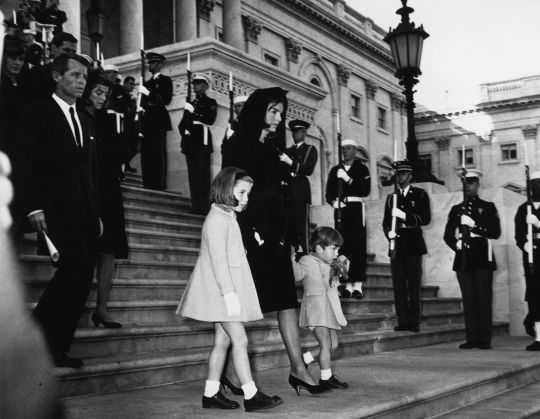


President John F. Kennedy's funeral - November 25, 1963.
#John F. Kennedy#Jacqueline Kennedy#Caroline Kennedy#John F. Kennedy Jr#Robert F. Kennedy#Patricia Kennedy Lawford#Jean Kennedy Smith#Peter Lawford#Stephen Smith#Sydney Lawford#Lyndon B. Johnson#Lady Bird Johnson#Rose Kennedy#Eunice Kennedy Shriver#A Week Tribute
29 notes
·
View notes
Text
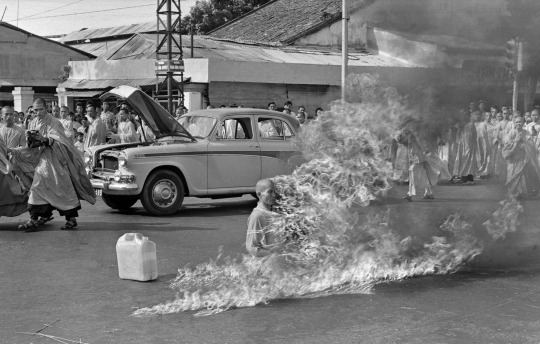
Malcolm Browne - The Burning Monk (1963) Thích Quảng Đức protesting the persecution of Buddists by altruistic suicide.
Browne photographed Vietnamese Mahayana Buddhist monk Quảng Đức's self-immolation on a busy intersection in Saigon, during which he remained perfectly still. "I just kept shooting and shooting and shooting and that protected me from the horror of the thing."
“No news picture in history has generated so much emotion around the world as that one.” --President John F. Kennedy
Self-immolation (the word immolation originally meant "killing a sacrificial victim; sacrifice"), is tolerated by some elements of Mahayana Buddhism and Hinduism, and it has been practiced for many centuries for various reasons, including political protest.
Browne won a Pulitzer Prize for International Reporting and received many job offers, eventually leaving the AP in 1965.
Malcolm Browne: The Story Behind The Burning Monk

The procession from the monastery to central Saigon - Malcolm Browne–AP
"The monks were very much aware of the result that an immolation was likely to have. So by the time I got to the pagoda where all of this was being organized, it was already underway—the monks and nuns were chanting a type of chant that’s very common at funerals and so forth. At a signal from the leader, they all started out into the street and headed toward the central part of Saigon on foot. When we reached there, the monks quickly formed a circle around a precise intersection of two main streets in Saigon. A car drove up. Two young monks got out of it. An older monk, leaning a little bit on one of the younger ones, also got out. He headed right for the center of the intersection. The two young monks brought up a plastic jerry can, which proved to be gasoline. As soon as he seated himself, they poured the liquid all over him. He got out a matchbook, lighted it, and dropped it in his lap and was immediately engulfed in flames. Everybody that witnessed this was horrified. It was every bit as bad as I could have expected." -- Malcolm Browne
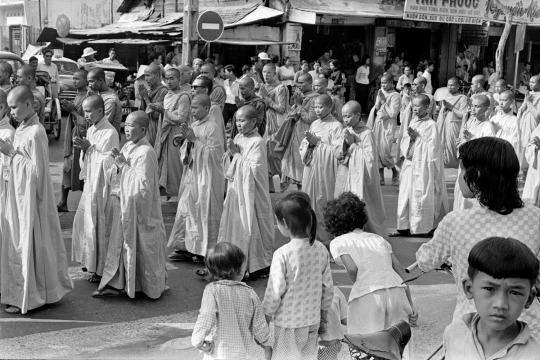

Buddhist monk Quang Duc emerged from a car and sat in the center of the intersection while a younger monk poured gasoline over him. Malcolm Browne–AP
"I don’t know exactly when he died because you couldn’t tell from his features or voice or anything. He never yelled out in pain. His face seemed to remain fairly calm until it was so blackened by the flames that you couldn’t make it out anymore." -- Malcolm Browne

In the air was the smell of burning human flesh; human beings burn surprisingly quickly. Behind me I could hear the sobbing of the Vietnamese who were now gathering. I was too shocked to cry, too confused to take notes or ask questions, too bewildered to even think.
Later we learned that the man was a priest named Thich Quang Duc who had come to the square as part of a Buddhist procession, had been doused with gasoline by two other priests, had then assumed the cross-legged "lotus" position and had set a match to himself. As he burned he never moved a muscle, never uttered a sound, his outward composure in sharp contrast to the wailing people around him. -- David Halberstam, American journalist who was present at the scene


Monuments to Thich Quang Duc, the Buddhist monk whose self-immolation hit the headlines of the world in 1963.
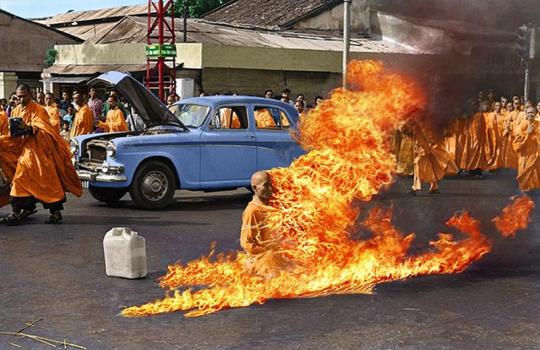
Self-immolation has been a Buddhist and Hindu practice for many centuries for various reasons.

A Hindu widow burning herself with the corpse of her husband, 1657
#david halberstam#malcolm browne#Thich Quang Duc#self immolation#mahayana buddhist#buddhist monk#buddhist#hindu#viet nam#Pulitzer Prize#historical photos#phtography#award winning photography#monument#statue
39 notes
·
View notes
Text

Lee Radziwill at the state funeral held for President John F. Kennedy on November 24th, 1963.
Also photographed are her mother Janet Auchincloss, step father Hugh D. Auchincloss, and her half brother James Auchincloss.
#lee radziwill#american vintage#iconic women#1960s#vintage beauty#60s#1960s fashion#1960s women#60s aesthetic#60s fashion#jfk assassination#american history#us history#jackie kennedy#fashion icon#washington dc#kennedy family#the kennedys#60s 70s 80s 90s#1960s history#1960s photography
28 notes
·
View notes
Text
It's really unfortunate but I do think it's a little darkly humorous that after essentially abusing his ex wife and generally fumbling her, after Marilyn Monroe died Joe Dimaggio was like "like FUCK is that abuser John f Kennedy coming to her funeral!" And stopped him from coming. cause like yeah he mightve hit her but that slimy Irish potato head mf had her killed for certain. naw jk but I mean- that's gotta be a part of what happened right. I mean the circumstances there were uhhh, anyway it was literally like accusing someone of cheating during a game of monopoly when you personally happened to have all that spare cash stashed under free parking ready to go too
17 notes
·
View notes
Text

He was called "filthy" because his skin was dark, unintelligible because he could barely speak English. When he arrived in this country, he was placed in a special class for immigrants. But, a few of his teachers saw something in the way he expressed himself, through his drawings, through his view of the world. He would soon master his new language.
His mother had made a difficult decision to take him, his two younger sisters and a half-brother to America, seeking a better life for their family. They settled in Boston's South End, at the time the second-largest Syrian-Lebanese-American community. The family would struggle and the young boy would lose one sister and his half-brother to tuberculosis. His mother would die of cancer.
He would write, “Out of suffering have emerged the strongest souls; the most massive characters are seared with scars.”
He was born in poverty on January 6, 1883 in what is now modern day Lebanon.
He believed in love, he believed in peace, and he believed in understanding.
His name was Kahlil Gibran, and he is primarily known for his book, "The Prophet." The book, published in 1923, would sell tens of millions of copies, making him the third best-selling poet of all time, behind Shakespeare and Laozi.
Published in 108 languages around the world, passages from "The Prophet" are quoted at weddings, in political speeches and at funerals, inspiring influential figures such as John F. Kennedy, Indira Gandhi, Elvis Presley, John Lennon, and David Bowie.
He was very outspoken, attacking hypocrisy and corruption. His books were burned in Beirut, and in America, he would receive death threats.
Gibran was the only member of his family to pursue scholastic education. His sisters were not allowed to enter school, primarily because of Middle Eastern traditions as well as financial difficulties. Gibran, however, was inspired by the strength of the women in his family, especially his mother. After one sister, his mother, and his half-brother died, his other sister, Mariana would support Gibran and herself by working at a dressmaker's shop.
Of his mother, he would write:
"The most beautiful word on the lips of mankind is the word 'Mother,' and the most beautiful call is the call of 'My mother.' It is a word full of hope and love, a sweet and kind word coming from the depths of the heart. The mother is everything – she is our consolation in sorrow, our hope in misery, and our strength in weakness. She is the source of love, mercy, sympathy, and forgiveness."
Gibran would later champion the cause of women’s emancipation and education.
He believed that “Safeguarding the rights of others is the most noble and beautiful end of a human being.”
In a poem to new immigrants, he would write, "I believe you can say to the founders of this great nation. 'Here I am. A youth. A young tree. Whose roots were plucked from the hills of Lebanon. Yet I am deeply rooted here. And I would be fruitful.'"
He would write in "The Prophet":
“Let there be spaces in your togetherness, And let the winds of the heavens dance between you. Love one another but make not a bond of love: Let it rather be a moving sea between the shores of your souls. Fill each other's cup but drink not from one cup. Give one another of your bread but eat not from the same loaf. Sing and dance together and be joyous, but let each one of you be alone, Even as the strings of a lute are alone though they quiver with the same music. Give your hearts, but not into each other's keeping. For only the hand of Life can contain your hearts. And stand together, yet not too near together: For the pillars of the temple stand apart, And the oak tree and the cypress grow not in each other's shadow.”
13 notes
·
View notes
Text
Burial At Sea: The Odyssey of JFK's Original Casket

It was approximately 1:00 PM when a man called Vernon B. O'Neal of O'Neal's Funeral Home and asked for the best casket that O'Neal had available. The man on the phone, simultaneously calm and tense, needed the coffin quickly and O'Neal had a slight problem. Of the 18 people who worked at O'Neal's Funeral Home, 17 of them were out to lunch. After all, it was a beautiful Friday day for November in Texas.
O'Neal picked out a solid-bronze coffin with white satin lining tagged at a sales price of $3,995 from his storeroom and waited for three more of his employees to return from lunch. The bulky Handley Brittania casket from the Elgin Casket Company weighed over 400 pounds when it was empty and O'Neal certainly couldn't lift it into his Cadillac hearse by himself. Once he had it loaded, he rushed to Parkland Memorial Hospital on the most important delivery of his career.
The man who had ordered the casket, Clint Hill, was a Secret Service agent and less than an hour earlier he had climbed on to the back of a moving limousine to try to get to the subject he was charged to protect. He was unsuccessful. The casket was for the President of the United States, John Fitzgerald Kennedy.
When the casket arrived at Parkland Hospital, O'Neal was met by agents from the Secret Service and some of President Kennedy's aides. They helped O'Neal push the coffin into the hospital and down a corridor towards Trauma Room One where the President had been officially pronounced dead just minutes earlier. One of the President's aides and the doctor who had just worked on Kennedy tried to distract the President's grieving wife so that she wasn't anguished further by the sight of the coffin that her now-dead husband was about to be placed in.
Jacqueline Bouvier Kennedy refused to turn away and begged to be let into the Trauma Room to see her husband once more. The doctor didn't want her to see anything else, but Jackie insisted, telling the doctor "How can I see anything worse than what I've seen?" and pointing out that "His blood is all over me!" The doctor let her in the Trauma Room as O'Neal wheeled the casket inside and she placed her wedding ring on JFK's finger before retreating back to the outer hallway once again.
Vernon O'Neal was horrified when he saw the condition of the President's body. Blood was everywhere and a gaping wound exposed brain matter which was seeping out of John F. Kennedy's head. Not wanting to damage the beautiful and expensive casket that he had picked out for the President, O'Neal and several emergency room nurses went to work. The bottom of the inside of the coffin was lined with a plastic mattress covering and the President's body was wrapped in a bed sheet. The nurses went even further and spent 20 minutes carefully wrapping President Kennedy's head in numerous white bed sheets so that blood didn't seep through and stain the lining of the casket.
After Kennedy's body was placed in the coffin, preparations were made to leave Parkland Hospital and take the President back to Air Force One at Dallas's Love Field so that they could transport him back to Washington, D.C. As the Secret Service and the President's aides (many of whom were longtime, close friends of JFK) wheeled his casket towards the exit, they were stopped by Dr. Earl Rose, the medical examiner for Dallas County, Texas. In 1963, it was not a federal crime to kill the President of the United States. Because of this, there was no federal jurisdiction for John F. Kennedy's murder -- only local. Despite tsxxxshe scale of the crime to the nation, it was technically just another murder in Dallas, Texas on November 22, 1963 (because of the laws at the time, on a purely legal basis, the murder of Dallas police offer J.D. Tippit about 45 minutes after Kennedy's shooting was a far more serious crime than the President's assassination). Because of this, Dr. Rose informed the men escorting the President's body that they needed to leave it in Dallas. Rose noted that he needed to autopsy the body before they took it anywhere. To Dr. Rose, a homicide victim was a homicide victim and he had a job to do.
The Secret Service was incredulous and President Kennedy's loyal aides were even angrier. In the corridor of Parkland Memorial Hospital, things got tense. Rose found himself in a shouting match with the Secret Service and some of Kennedy's aides. Even the doctors at Parkland sided with the Secret Service and pleaded with Rose to release the body so that they could take the President back to Washington. A justice of the peace arrived, with the power to overrule the medical examiner. But he didn't. The justice of the peace said that Kennedy would have to be autopsied in Dallas and ensured the Secret Service that it wouldn't take any more than three hours.
Again, tempers flared and the men in the hallway at Parkland were close to fisticuffs as the medical examiner, Dr. Rose, literally blocked the casket's path with his body in order to keep it inside the hospital. When the President's close aide, Kenny O'Donnell, appealed to the medical examiner and the justice of the peace for compassion for Jackie Kennedy and an exception for this case so that they could return the dead President to Washington and get Jackie out of Texas as quickly as possible, the justice of the peace, Theron Ward, refused.
"It's just another homicide as far as I'm concerned," said the justice of the peace.
O'Donnell lost his temper, "Go fuck yourself! We're leaving. Get the hell out of the way."
With that, the Secret Service and all the President's men pushed forward. The medical examiner, the justice of the peace, and several Dallas policemen were forcibly shoved out of the way by Secret Service agents who were ready to draw their guns, if necessary. Jackie Kennedy was close by, her hand softly guiding the President's bronze casket as it was removed from the hospital and placed in the hearse which raced en route to Love Field and Air Force One.
When the entourage arrived at Air Force One, they found a plane completely encircled by heavily armed Secret Service agents. The plane’s powerful engines were running, ready to lift off at any moment and push Dallas and everything that happened there behind them as quickly as possible. Fearing the unknown and suspecting a possible conspiracy to decapitate the entire government, the shades were drawn down over the windows throughout the aircraft in order to protect against any further possible attacks. On the plane was Lyndon Johnson, soon-to-be sworn in as the 36th President of the United States, and awaiting the arrival of Jackie and the body of the deceased President. The Secret Service and the President's aides struggled with the extraordinarily heavy casket as they maneuvered it up the steps to Air Foce One and into a holding area in the back of the plane cleared out by removing two rows of seats.
Jackie remained with President Kennedy's casket from almost the entire time she boarded Air Force One until it landed at Andrews Air Force Base near Washington. The only exception was prior to the plane taking off from Dallas when she stood -- still wearing her blood-stained pink Chanel dress -- on one side of Lyndon Johnson as he took the oath of office as the new President, his hand resting on JFK's book of Catholic missals, which had been found in JFK's private cabin by aides rummaging for a Bible for the oath-taking ceremony.
For four hours, Air Force One flew in a dark cloud of sadness towards the nation's capital. New President Johnson made numerous phone calls, including calls to the slain President's mother, Rose, and brother, the Attorney General Bobby Kennedy. In flight, LBJ also hastily made preparations for meetings upon landing in Washington. In the back of the plane, a silent vigil was held around John F. Kennedy's casket by Jackie and the President's aides, who were so close to Kennedy that they were often referred to as the "Irish Mafia".
President Kennedy's personal physician, Admiral George Burkley, suggested to Jackie that JFK's body be taken to Bethesda Naval Hospital upon arrival in Washington for the autopsy. Jackie showed great compassion herself on that terrible flight. She insisted that Bill Greer drive the vehicle carrying the President's casket to Bethesda. Greer was grief-stricken and apologetic during the flight because he had been driving JFK's limousine in Dallas and made no attempt to speed up or take evasive maneuvers when shots were first fired. Greer felt partly responsible for President Kennedy's death and Jackie wanted to show her confidence and appreciation in his service to her late husband.
When Air Force One arrived at Andrews Air Force Base after dark on November 22, 1963, Bobby Kennedy rushed on to the plane and directly to Jackie to comfort his sister-in-law, blowing past President Johnson and snubbing LBJ as the new President attempted to offer his condolences to JFK’s devastated brother. The dead President's aides and Secret Service detail rebuffed a military casket team who arrived to remove the President's coffin from the plane. Instead they formed a personal honor guard and handled Kennedy’s casket themselves, awkwardly placing it on to a catering lift and lowering it to the ground so that they could place it in a waiting Navy ambulance from Bethesda. Jackie, with her husband's blood still clearly visible on her bare legs, and Bobby climbed into the back of the ambulance with JFK's casket and drove straight to Bethesda as President Johnson made a statement for the millions of Americans watching the arrival ceremony on live television.

The motorcade transporting the body of President John F. Kennedy from Andrews Air Force Base to Bethesda Naval Hospital for his autopsy arrived right around the same time that President Lyndon Johnson's helicopter landed on the South Lawn of the White House from Andrews so that the new President could take the reins of the government of a nation in shock. As trusted members of his "Irish Mafia" helped to remove Kennedy's casket from the Navy ambulance, Jackie Kennedy and RFK headed upstairs at Bethesda where private suites were set aside for their comfort and friends and family were waiting to help with the comforting.
Across town, the new President prepared to charge into his new duties. During the flight home from Dallas, Lyndon Johnson had summoned Cabinet members, diplomats, Members of Congress, current White House aides, former White House aides, and anybody else who had any inkling of what powered the Executive Branch, to meet him at the White House upon his arrival for consultation, directions, and mutual support. Upon arriving at the White House, Johnson briefly spent a moment by himself in the Oval Office before leaving and walking with aides to the neighboring Old Executive Office Building. LBJ didn't feel right with immediately setting up shop in the Oval Office just hours after President Kennedy's death. Instead, Johnson decided to use his Vice Presidential office in the OEOB for the meetings he planned on holding that night.
Before those meetings began, however, President Johnson took a moment for a brief pause in his frenetic assumption of the Presidency. Requesting a few minutes of privacy, LBJ sat down at his desk in the OEOB and wrote two short letters which became the first pieces of correspondence of the Johnson Administration -- letters which the young recipients couldn't even read yet:
"Dear John--It will be many years before you understand fully what a great man your father was. His loss is a deep personal tragedy for all of us, but I wanted you particularly to know that I share your grief--You can always be proud of him. Affectionately, Lyndon Johnson"
"Dearest Caroline--Your father's death has been a great tragedy for the Nation, as well as for you at this time. He was a wise and devoted man. You can always be proud of what he did for his country. Affectionately, Lyndon Johnson"
The casket containing the father of those two young children had been wheeled into the hallways leading to Bethesda Naval Hospital's morgue. Despite the fact that this was being done in a completely secure, private, inner sanctum of the famed military hospital, the casket was that of a man who had started the day as Commander-in-Chief of the United States Military. Out of respect and duty, an honor guard lifted the coffin from a gurney and carried it through the halls and into the brightly-lit, antiseptic autopsy room where doctors prepared to examine the lifeless body of the 35th President of the United States.
When President Kennedy's casket was opened, it became readily apparent that the hard work of Vernon O'Neal and the nurses at Parkland Hospital in Dallas to protect the inside of the expensive coffin was unsuccessful. The makeshift bandage which had been carefully wrapped around Kennedy's head did not prevent seepage after all. Blood soaked through the sheets which made up the "bandage" and the inner lining of Kennedy's ornate casket was obviously damaged. It was a surreal, eerie sight in the autopsy room as John F. Kennedy was removed from his coffin and placed on the stainless steel autopsy table at Bethesda. The 35th President was naked and seemed to be in remarkably good physical condition for a 46-year-old man who was known to suffer from serious health problems. Most shocking for those in the room during the autopsy, however, was the fact that this seemingly young and vital President who had inspired a new generation was now very much dead with a massive gunshot wound to the head that exposed the part of his brain still contained within it and left the top of his skull jaggedly disfigured with missing pieces of bone and flesh. Kennedy's eyes were fixed open, staring vacantly into space with dilated pupils that could no longer envision ambitious goals for his nation. The mouth which formed his famous words, framed his most inspirational messages, and spoke that unmistakable Boston accent now hung open, forever silenced and permanently paralyzed in a final expression which seemed to mirror the mood of the entire country: a combination of shock, pain, horror, and perplexity.
The pathologists who performed John F. Kennedy’s autopsy finished their work shortly after midnight on November 23, 1963. Photographs and drawings were taken of Kennedy’s body during the autopsy, and when the autopsy was finished, morticians from one of the capital’s finest funeral parlors arrived on the scene. A team from Gawler’s Funeral Home entered the autopsy room at Bethesda Naval Hospital to embalm the President and attempt to make him presentable. The casket that brought JFK back to Washington from Dallas would not work. While the casket from O’Neal’s was a beauty from the exterior, the interior was a mess. All of the safeguards attempted by O’Neal and the Parkland nurses in Dallas were not quite enough to protect the inside of the Handley Brittania from the gruesome wound that had killed the President.
The question many might have is why would there be such a need to make John F. Kennedy’s remains presentable when JFK was obviously in no condition to be viewed? Why couldn’t they simply close that beautiful Handley Brittania casket that was purchased in Dallas and bury Kennedy in the container which carried him back to Washington?
At the orders of Jackie Kennedy, aides went to the Library of Congress in the hours after President Kennedy’s body returned to Washington, D.C. and researched the historic, iconic, epic state funeral of Abraham Lincoln – the first American President to be assassinated, almost exactly a century earlier. Kennedy’s funeral preparations would be steeped in tradition and either perfectly replicate or closely mirror the funerals of other fallen American Presidents including Lincoln, James Garfield, William McKinley, Warren G. Harding, and Franklin D. Roosevelt. As information about these past Presidential funerals (along with the funerals of famous Congressional and military leaders throughout United States history) was brought forward, one constant was apparent: in almost every case, the fallen leader was viewed by a grieving public in an open casket display. For many Americans, streaming past the open casket of a former President or American military hero was an opportunity to pay tribute, look upon the face of a fallen hero, and find closure in another storied chapter of American History.
Yet, as much as Jackie wished to replicate Lincoln’s funeral, she was dismayed at the thought of an open casket for John F. Kennedy. Jackie had seen what the assassin’s bullet had done to her husband. As Kennedy’s motorcade raced to Parkland Memorial Hospital in Dallas minutes after the shooting, Jackie wouldn’t allow doctors and Secret Service agents to remove President Kennedy’s body from the limousine until an agent covered Kennedy’s head with his suit jacket, shielded the President from the view of others, and preserved some of the dignity that was so important to the Kennedy image. As the morticians from Gawler’s worked on JFK, Jackie once again expressed her wish that her husband’s coffin would be closed. Bobby Kennedy, however, didn’t think that the decision was up to the family. RFK felt strongly that JFK belonged to the people, too, and that the American people would want their opportunity to say goodbye.
Following his assassination in 1865, Abraham Lincoln’s remains embarked on an epic, 20-day-long train trip that retraced the route he took to Washington in 1861 prior to his Inauguration. In major cities throughout the Northeast and Upper Midwest, hundreds of thousands of Americans turned out to pay their respects to their “martyred” President. Embalming was a relatively newly-mastered American art at the time of Lincoln’s death – a technique which had been much-improved upon and much-practiced during the Civil War when young men frequently died far from home and families looked to preserve their fallen loved ones so that they could have one last look at them before they were laid to rest.
However, even today, embalming can’t guarantee perfect preservation for an extended amount of time. In 1865, there were definitely some worries about Lincoln’s extended, national funeral. After all, the warm weather of spring had started throughout the United States and Lincoln would be honored with open casket viewings by Americans in well over a dozen cities between Washington, D.C. and Springfield, Illinois in the twenty days after his death. Some people worried whether it was appropriate to view Lincoln’s corpse at all considering the fact that he had died from a gunshot wound to the head. Lincoln’s wound was far less devastating visually than Kennedy’s. The bullet that killed Lincoln had entered his brain, but did not exit Lincoln’s skull. The only damage visible was a black eye from bruising of the facial bones close to where John Wilkes Booth’s bullet had lodged in Lincoln’s brain. Undertakers accompanied Lincoln’s body on the funeral train back to Springfield and as time passed, they certainly became necessary. Lincoln’s face blackened considerably by the time his remains reached Springfield – partly from the facial bruising, partly from the dirt and dust of twenty days exposure to the elements, but also partly due to the beginning stages of decomposition. At some cities, the undertakers who accompanied Lincoln home would brush his face with chalk to make him more presentable to the citizens who came to pay their respects. In a few cities, it also became necessary to surround Lincoln’s casket with fragrant flowers and spray the area with heavy perfumes for reasons that I’m sure aren’t too difficult to surmise.
John F. Kennedy was not going to be viewed by the public for twenty days in over a dozen cities throughout the country and the funeral industry had made even larger strides in the century since Lincoln’s death. However, JFK was severely disfigured by the bullet that killed him. Unlike in Lincoln’s case, the bullet that tore through Kennedy’s skull and brain also exited his head, causing major damage that would be difficult for even the most-skilled mortician to disguise. The team from Gawler’s were perhaps the best in the business, but it wasn’t simply a matter of brushing some chalk or cosmetic makeup on Kennedy’s face to cover up some bruising or minor discoloration. Entire pieces of JFK’s skull were missing and parts of the President’s head needed to be synthetically reconstructed. The morticians also had to pack his skull with cotton and Plaster of Paris in the place of his brain -- parts of which were removed during the autopsy and other parts of which were in countless places including (but not limited to) the fabric of his wife’s Pink Chanel dress, the windshields of the motorcycle cops escorting his motorcade in Dallas, the backseat and trunk of his limousine, and all over Dealey Plaza in Dallas.
The mortuary team from Gawler’s took over three hours to work on President Kennedy, clean him up, dress him (in a bluish-gray pinstriped suit with a white shirt, black shoes, and blue tie with dots), place him in a brand-new casket and put a rosary in the hands of the nation’s only Catholic President. A little after 4:00 AM, President Kennedy, his widow and Bobby Kennedy arrived at the White House after a solemn motorcade through the darkened streets of Washington. In the first nod to Lincoln’s funeral, JFK’s flag-draped casket was carried by an honor guard into the East Room of the White House and placed on a replica of the black catafalque that Lincoln’s coffin once rested on. After Kennedy’s casket was situated in the East Room, Jackie Kennedy and Bobby Kennedy entered the room and asked that the lid be opened. Both Jackie and Bobby were exhausted and emotionally drained, and Jackie was still wearing the Pink Chanel dress that she had cradled her dying husband’s head in. The front of her dress was smeared with the dried blood and brain matter of the President. As ghastly as the sight was, Jackie continually refused to change, noting that she wanted everyone to see what “they” did to her husband. As the casket lid was opened, Jackie snipped a lock of her husband’s hair with scissors and turned to Bobby, saying, “It isn’t Jack” – once again alluding to her wish that the casket remain closed.
Jackie left the East Room and headed upstairs to the White House Residence to finally change her clothes and attempt to sleep. In the East Room, Bobby remained near his brother’s coffin with a couple of friends, close aides, and Secretary of Defense Robert McNamara. The stoic RFK – always much tougher than his older brother – was a wreck by this point, after attempting to stay strong and supportive throughout the night for his stunned sister-in-law. Bobby had not yet looked at JFK’s remains. To finally make the decision about whether or not JFK would have an open casket, RFK took a look at his brother’s face. When he saw Jack in the coffin, RFK immediately agreed with Jackie’s feelings, “She’s right. Close it.” While the team from Gawler’s had done an admirable job of repairing the massive trauma to the President’s head, JFK was virtually unrecognizable as the man he once was. To those who saw his body as the casket was briefly open in the East Room early that morning, it was apparent that the American people wouldn’t want to remember their fallen President in that way – as if he were a wax museum knock-off of the real John F. Kennedy. The funeral ceremonies over the next few days would all be closed casket and the nation would remember JFK as the young, lively, inspirational President that he had been for so many Americans.
•••
Since the assassination of John F. Kennedy in 1963, there have been so many unanswered questions and theories and allegations. Many are the result of sloppy work on behalf of the government in the hours following the shooting, during the autopsy, after the autopsy, and in the failure to protect the suspected assassin, Lee Harvey Oswald, as he was being transferred to a new facility to face charges of murdering President Kennedy and Dallas Police Office J.D. Tippit. Evidence has been lost or misplaced, and some records remain sealed until 2017 – 54 years after the assassination and 100 years after JFK’s birth.
There is one aspect of this story that received some closure, however, and that is what happened to JFK’s original casket – the expensive Handley Brittania coffin that Clint Hill ordered from Vernon O’Neal’s Funeral Home in Dallas in the hectic minutes after President Kennedy was pronounced dead.
After JFK’s autopsy at Bethesda Naval Hospital and the hard work by the mortuary team from Gawler’s Funeral Home to make him presentable, President Kennedy couldn’t be placed back in the beautiful but bloodstained bronze coffin that had carried him home from Texas. Gawler’s had brought with them to Bethesda another elegant casket fit for a President – a $3,160 Marsellus 710 coffin that was crafted from “hand-rubbed, five-hundred-year-old African mahogany”. It was that flag-draped casket from Gawler’s that John F. Kennedy, Jr. saluted and Americans saw being laid to rest in Arlington National Cemetery.
The history of Vernon O’Neal’s casket did not end that night at Bethesda when President Kennedy was transferred to a different coffin. Gawler’s Funeral Home took possession of JFK’s original casket after they placed him in the undamaged casket that their mortuary team had brought to Bethesda Naval Hospital following Kennedy’s autopsy. Whether it was as a morbid souvenir or simply due to confusion about what to do with it, Gawler’s stored JFK’s original coffin in a warehouse in Washington, D.C. In January 1964, less than two months after JFK’s burial, Vernon O’Neal submitted a bill to the federal government for $3,995 for the casket that Secret Service Agent Clint Hill ordered in Dallas and JFK was transported to Washington in.
The government felt that O’Neal’s bill was “excessive”, particularly since he had merely delivered the casket to Parkland Hospital in Dallas and had not performed any other funeral services such as embalming, chapel services or transportation of mourners. O’Neal lowered the price by $500, but the government still had an issue with the $3,495 price tag. What Vernon O’Neal actually wanted was the casket itself. O’Neal had received offers of $100,000 by parties interested in collecting and displaying the casket as a unique relic of the slain President. For the Kennedy Family – still reeling from the assassination and its aftermath – the last thing they wanted was a spectacle surrounding a bloodstained coffin that JFK had spent just a few hours in. At the family’s urging, the federal government paid O’Neal (he received $3,160 for his services on November 22, 1963) and the General Services Administration took possession of the object in 1965.
In September 1965, the House of Representatives passed a bill which required the government to preserve any objects related to the Kennedy Assassination which might contain evidentiary value. Several days later, Representative Earle Cabell from Texas sent a letter to Attorney General Nicholas Katzenbach (who had replaced Bobby Kennedy at the Justice Department a year earlier). In his letter, Congressman Cabell suggested that the casket had no value for anyone other than “the morbidly curious”. Since the Kennedy Family “did not see fit to use this particular casket in the ultimate interment of the body”, Cabell felt that it was “surplus” material owned and controlled by the federal government. To shut down those who might be “morbidly curious”, Cabell recommended that the casket “be declared the proper property of the USA and, as such and in keeping with the best interest of the country, be destroyed.”
The Kennedy Family agreed with Congressman Cabell’s sentiments and Attorney General Katzenbach ensured everyone that the casket had no evidentiary value, no good reason for display or storage, and that it was the property that the government had the right to dispose of in whichever way it sought fit. On February 18, 1966, several members of the Air Force picked the casket up from a secure building at the National Archives just a few blocks from the White House. The casket was placed in an Air Force truck and transported to Andrews Air Force Base – the very place that the casket had originally landed in Washington with President Kennedy inside of it less than three years earlier. At Andrews, the Air Force team from the 93rd Air Terminal Squadron loaded the coffin on to a C130 transport plane.
To dispose of the casket, the Air Force had decided to take it to a place that JFK had once considered being buried: the Atlantic Ocean. Kennedy loved the sea and was said to have considered being buried at sea when he died. Of course, we know that Kennedy was buried at Arlington National Cemetery instead, but for many reasons, the Atlantic Ocean was the perfect place for the disposal of the casket that had brought him back to Washington following his assassination.
The Air Force wanted to ensure the integrity of the casket and not allow it to become a souvenir by someone who happened to come across it floating in the ocean or washing up on the shore. The C130 flew about 100 miles east of Washington, D.C. and descended to about 500 feet above the water. Before taking off, the Air Force had drilled over 40 holes into the casket and filled it with three 80-pound sandbags. It was also secured inside of a wooden crate and sealed shut in a manner so that it wouldn’t break apart upon hitting the water.
At approximately 10:00 AM, the C130’s tail hatch was opened and the casket was pushed out of the aircraft. Parachutes softened its fall and the coffin began to sink instantly. The airplane circled the drop zone for about 20 minutes to make sure that the coffin didn’t resurface, but they had no reason to worry. The Air Force had chosen an area of the Atlantic that saw very little air or sea traffic, and the casket settled in about 9,000 feet of water. The Kennedy Family was relieved that they no longer had to worry about a bloody casket going on display somewhere for the “morbidly curious”.

#History#John F. Kennedy#JFK#President Kennedy#Assassination of John F. Kennedy#JFK Assassination#Kennedy Assassination#60th Anniversary of JFK Assassination#60th Anniversary of Kennedy Assassination#60th Anniversary#Presidents#Presidential History#Presidential Assassinations#Presidential Deaths#Death of John F. Kennedy#State Funeral of John F. Kennedy#Death and State Funeral of John F. Kennedy#Burial At Sea#Burial At Sea: The Odyssey of JFK's Original Casket#JFK's Original Casket#Presidential Funerals#Funeral of John F. Kennedy#Politics#Presidential Politics#Dallas#U.S. Air Force#Kennedy Family#Jacqueline Kennedy#Robert F. Kennedy#RFK
44 notes
·
View notes
Text

He was called "filthy" because his skin was dark, unintelligible because he could barely speak English. When he arrived in this country, he was placed in a special class for immigrants. But, a few of his teachers saw something in the way he expressed himself, through his drawings, through his view of the world. He would soon master his new language.
His mother had made a difficult decision to take him, his two younger sisters and a half-brother to America, seeking a better life for their family. They settled in Boston's South End, at the time the second-largest Syrian-Lebanese-American community. The family would struggle and the young boy would lose one sister and his half-brother to tuberculosis. His mother would die of cancer.
He would write, “Out of suffering have emerged the strongest souls; the most massive characters are seared with scars.”
He was born in poverty on January 6, 1883 in what is now modern day Lebanon.
He believed in love, he believed in peace, and he believed in understanding.
His name was Kahlil Gibran, and he is primarily known for his book, "The Prophet." The book, published in 1923, would sell tens of millions of copies, making him the third best-selling poet of all time, behind Shakespeare and Laozi.
Published in 108 languages around the world, passages from "The Prophet" are quoted at weddings, in political speeches and at funerals, inspiring influential figures such as John F. Kennedy, Indira Gandhi, Elvis Presley, John Lennon, and David Bowie.
He was very outspoken, attacking hypocrisy and corruption. His books were burned in Beirut, and in America, he would receive death threats.
Gibran was the only member of his family to pursue scholastic education. His sisters were not allowed to enter school, primarily because of Middle Eastern traditions as well as financial difficulties. Gibran, however, was inspired by the strength of the women in his family, especially his mother. After one sister, his mother, and his half-brother died, his other sister, Mariana would support Gibran and herself by working at a dressmaker's shop.
Of his mother, he would write:
"The most beautiful word on the lips of mankind is the word 'Mother,' and the most beautiful call is the call of 'My mother.' It is a word full of hope and love, a sweet and kind word coming from the depths of the heart. The mother is everything – she is our consolation in sorrow, our hope in misery, and our strength in weakness. She is the source of love, mercy, sympathy, and forgiveness."
Gibran would later champion the cause of women’s emancipation and education.
He believed that “Safeguarding the rights of others is the most noble and beautiful end of a human being.”
In a poem to new immigrants, he would write, "I believe you can say to the founders of this great nation. 'Here I am. A youth. A young tree. Whose roots were plucked from the hills of Lebanon. Yet I am deeply rooted here. And I would be fruitful.'"
He would write in "The Prophet":
“Let there be spaces in your togetherness, And let the winds of the heavens dance between you. Love one another but make not a bond of love: Let it rather be a moving sea between the shores of your souls. Fill each other's cup but drink not from one cup. Give one another of your bread but eat not from the same loaf. Sing and dance together and be joyous, but let each one of you be alone, Even as the strings of a lute are alone though they quiver with the same music. Give your hearts, but not into each other's keeping. For only the hand of Life can contain your hearts. And stand together, yet not too near together: For the pillars of the temple stand apart, And the oak tree and the cypress grow not in each other's shadow.”
○○○○○○○○○○○○○○○○○○○○○○○○○○○○○○
● THE PROPHET ●
Do not live half a life
and do not die a half death
If you choose silence, then be silent
When you speak, do so until you are finished
If you accept, then express it bluntly
Do not mask it
If you refuse then be clear about it
for an ambiguous refusal is but a weak acceptance
Do not accept half a solution
Do not believe half truths
Do not dream half a dream
Do not fantasize about half hopes
Half the way will get you no where
You are a whole that exists to live a life
not half a life. ~Khalil Gibran
(Book: The Prophet https://amzn.to/3SnIaZd )
6 notes
·
View notes
Text
In memoriam
On 15 February, 1952, King George VI was laid to rest at St. George's Chapel at Windsor Castle.
Having the opportunity to visit his final resting place at the George VI Memorial Chapel this past year was a very moving moment for me.
I am posting this Scottish folk song, Chi Mi Na Morbheanna (The Mist Covered Mountains) to honor him today.
According to Helen Creighton and Calum MacLeod (Gaelic Songs in Nova Scotia, 1979, p. 13) the tune was a favorite of King George VI and was played at his funeral, and it was similarly played as a lament for President John F. Kennedy's funeral.
I have not been able to cross-confirm that this tune was indeed played at Bertie's funeral, but even if it was not, the king did so love the mountains of Scotland, as well as his Scottish wife, so I think it's a fitting tribute, none the less.
I can picture Bertie & Elizabeth dancing to this tune in heaven. 💕
youtube
5 notes
·
View notes
Text

Jacqueline Kennedy & Ted Kennedy greeting guests in the White House Red Room during a reception following the funeral of John F. Kennedy on November 25, 1963
#jackie kennedy#ted kennedy#vintage#icons#the kennedys#1960s#jackie o#60s#jfk#john f kennedy#60s icons#first lady#60s vintage#60s 70s 80s 90s#60s culture#60s style#jackie onassis#60s hair#jacqueline kennedy#fashion icon#jfk assassination#the white house#vintage celebrities#vintage fashion#vintage style#american vintage#kennedy family#1960s women#1960s aesthetic#iconic women
60 notes
·
View notes
Text
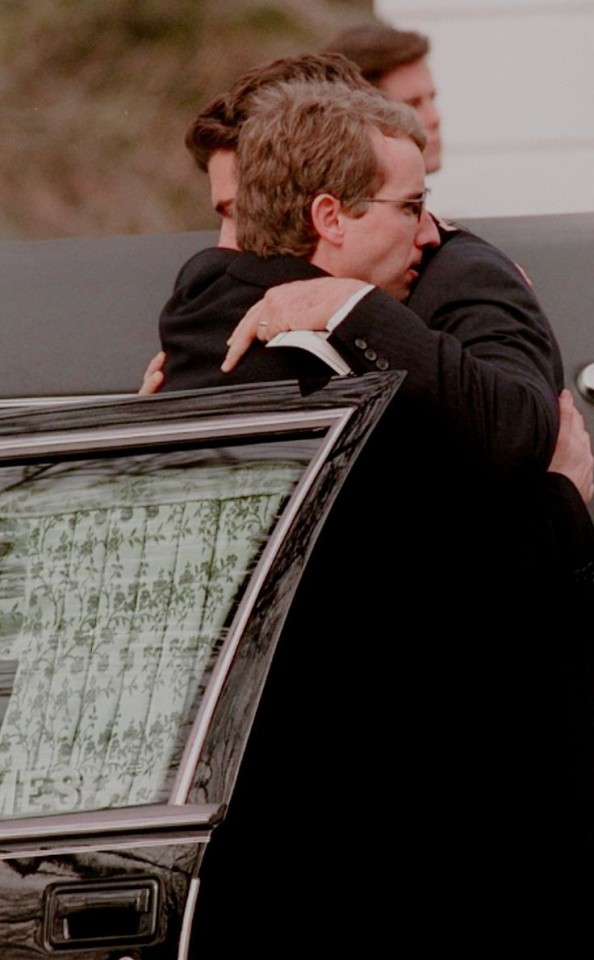
John F. Kennedy, Jr. comforts his cousin, Christopher Kennedy after the funeral of Michael Kennedy in 1998.
12 notes
·
View notes
Text

Marilyn Monroe Told Joe DiMaggio Someone Was Going to "Do Her In," a New Book Alleges
The baseball star never forgave Frank Sinatra for introducing her to the Kennedys.
Marilyn Monroe and Joe DiMaggio tied the knot at San Francisco City Hall on January 14, 1954, barely two years after DiMaggio asked a friend to set him up on a date with the blonde bombshell. The marriage was short-lived: it ended nine months later with Monroe citing DiMaggio's "mental cruelty" in her filing.
There we rumors that their divorce was the result of DiMaggio not wanting to take a back seat to his wife's fame, but a new book claims the split happened because Monroe couldn't have children. DiMaggio had a son, Joe Jr., from his first marriage to actress Dorothy Arnold, but wanted a family with his new wife, according to the biography Dinner with DiMaggio: Memories of an American Hero co-authored by brothers John Positano and Dr. Rock Positano.
"Joe wanted kids with Marilyn, and Marilyn wanted to reward him with a family," the book reads. "In Italian terms, sex meant kids. Great sex meant great kids. Marilyn gave goddess sex, but no kids."
Dr. Positano first met DiMaggio while treating him for an old heel spur injury, People reports. Their friendship formed over dinner at various New York City restaurants.

Monroe and DiMaggio on the beach in Florida.
However, the dissolution of their marriage didn't stop DiMaggio from caring about Monroe, who was 12 years his junior. In 1961, when the end of Monroe's four-year marriage to playwright Arthur Miller left her feeling "emotionally fragile," DiMaggio picked up the pieces. He secured her release from a psychiatric clinic, according to History.com, and whisked her away for some R&R at the Yankees' spring training camp in Florida.
"He felt that she was very vulnerable and very sweet and that it was very easy for people to take advantage of her," Dr. Positano told People.
DiMaggio cared for his former wife so much, in fact, that he never forgave his friend Frank Sinatra for introducing her to the Kennedy family. Monroe was coping with depression and drug addiction around the time rumors about affairs with John F. Kennedy and Bobby Kennedy began circulating.
"The understanding was that her involvement with Mr. Sinatra and the Kennedy clan put her in a position where maybe it wasn't good for her mental health or her emotional health," said Positano. "[DiMaggio] didn't think they were good people for her to be around."
Monroe's death at age 36 in August 1962, just 17 months after her psychiatric treatment, was ruled a "probable suicide." But Positano claims the actress had told DiMaggio someone was going to "do her in."
"'The whole lot of Kennedys were lady-killers,'" DiMaggio told Positano, according to the book, "'and they always got away with it. They'll be getting away with it a hundred years from now.'")li
"I always knew who killed her, but I didn't want to start a revolution in this country," DiMaggio allegedly told Positano. "I'll go to the grave regretting and blaming myself for what happened to her."
The baseball star, whom the book says Monroe loved to the end, is the one who arranged her funeral. He sent roses to her Los Angeles grave every week until his death in 1999. His last dying words were, purportedly, "I'll finally get to see Marilyn."
#marilyn monroe#marilyn monroe blog#blondeheroine#old hollywood#black and white#blonde heroine#documentary#death mention
15 notes
·
View notes
Text
ROUND TWO !!!!

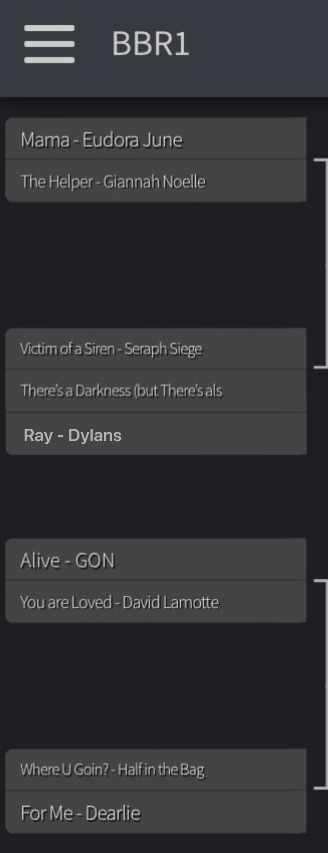
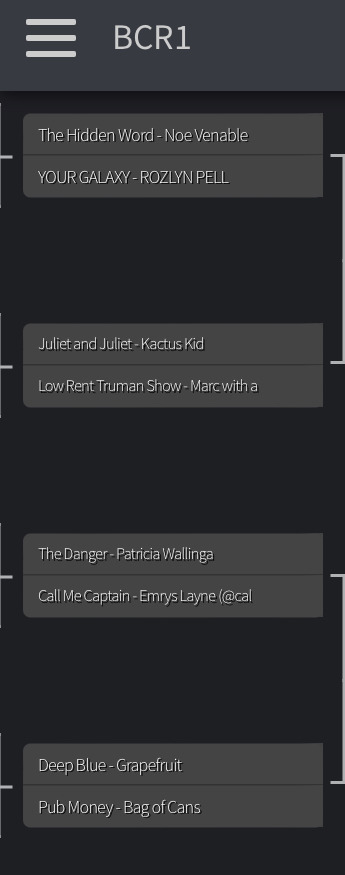

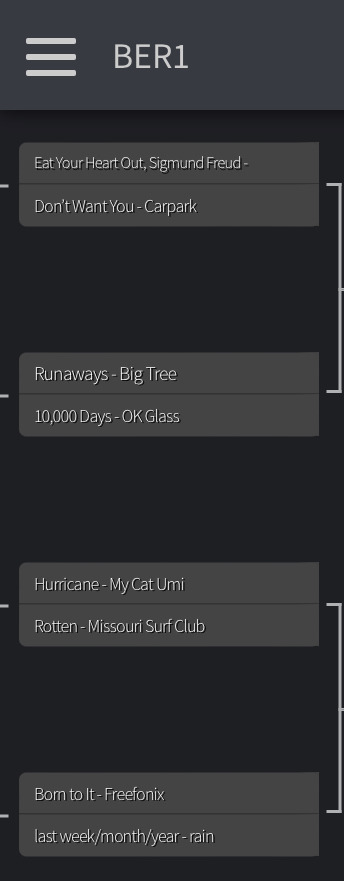



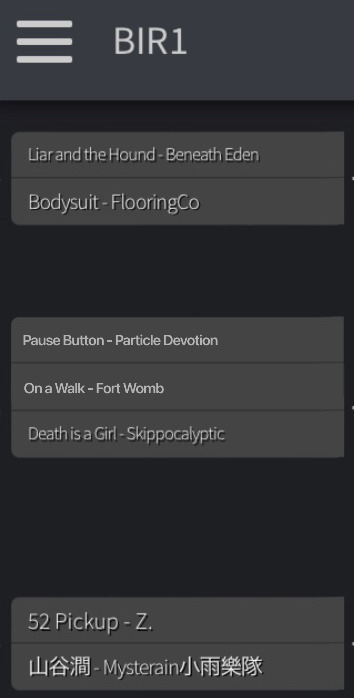
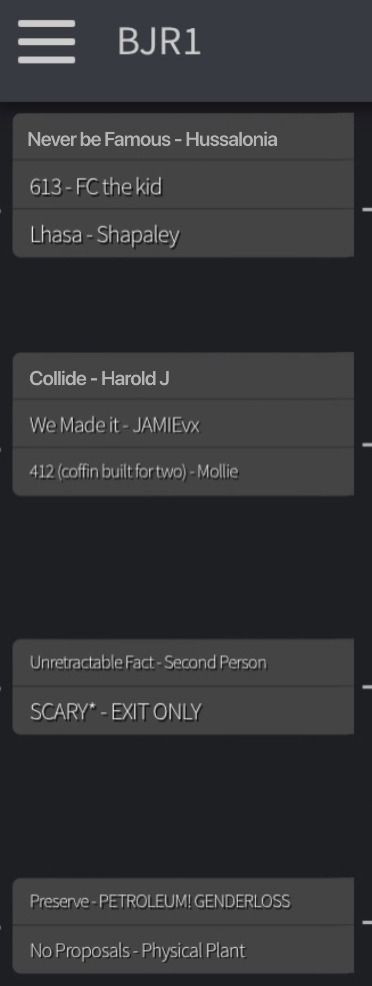




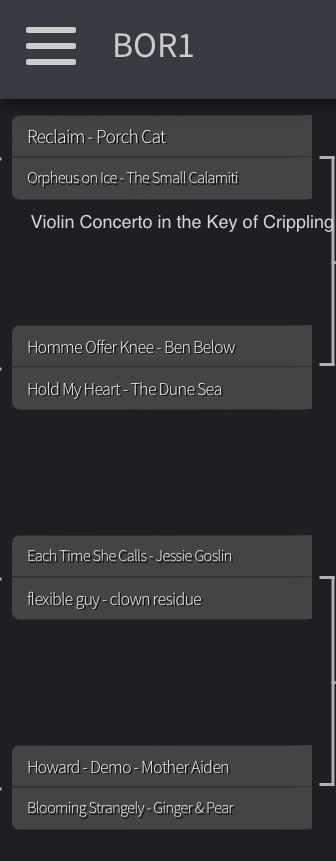

A
Keep Away - Isane Driver VS. Pulp Friction - Fool Heavy
Scatterbrain - Casual Tees VS. Sad Hit Song- V is for Villians
Patches - Jawbreaker Reunion VS. Animal Rites - John Congleton & The Nighty Nites
New Dance - DEERPEOPLE VS. Maple Leaf Etc - Maxshh
B
Mama - Eudora June VS. The Helper - Giannah Noelle
Victim of a Siren - Seraph Siege VS. There's a Darkness (but There's also a Light) - The Wild VS. Ray - Dylans
Alive - GON VS. You are Loved - David Lamotte TIE
Where U Goin? - Half in the Bag VS. For Me - Dearlie
C
The Hidden Word - Noe Venable VS. Echo in the Hills - Carrie Elkin VS. YOUR GALAXY - ROZLYN PELL
Juliet and Juliet -Kactus Kid VS. Low Rent Truman Show - Marc with a C
The Danger - Patricia Wallinga VS. Call Me Captain - Emrys Layne (@callmecapt) VS. Deep Blue - Grapefruit
D
PIANO GAMES - Hazma Notes VS. Worst in the World - Uncle Outrage
Cheese (original mix) -Cheese VS. Hokutoshichisei no Ichiya- Akiko lkuina
There'll be Someone at My Funeral Who Doesn’t Want to Be There - Sammy J VS. The Crayon Song - Class Of 3000
TECVM CIRCVMAMBVLARE NOLO - John Linnel VS. Imagination - Niel innes VS. Me and Nikolai - Pale Young Gentlemen
E
Eat Your Heart Out, Sigmund Freud - Mollie Maxwell VS. Don't Want You -Carpark
Runaways - Big Tree VS. 10,000 Days - OK Glass
Hurricane - My Cat Umi VS. Rotten - Missouri Surf Club
Born to it - Freefonix VS. last week/month/year - rain
F
Pointillize - Raccoon Fink VS. execute - ninty
Better Red Than Dead - KELChip VS. Ego -Powderpaint
... - subeteanatanoseidesu VS. Nighttime (I fall asleep) - Sam X
GOTH BITCH DUB - 621 gecs VS. To.Get.Her - Nixis
G
Dusk and Dawn - Das Fi VS. Between You and Me - Clementine Werchola
Monmon Fanmoran - Mochitsune VS. Can Graze the Roof Bring you Back to Childhood? - Anomaly Vector TIE
Memories - Jens East (Ft. Lotta Rasva) VS. Moongrains with Lyrics feat. Gumi A - Anonaly Vector VS. Ode to Janey Lou- FOE
The Dreaming- Marquis of Vaudevill VS. Best Friend - Taitoki
H
Rusalka and The Shepherd Girl - The Forgetmenauts VS. Four Tall Trees - Leslie Fish
Captain Ward - Tempest VS. The Trials Of Oscar Wilde - Alan John
Winter's Tooth - Alexander James Adam VS. He of Sidhe - Alexander James Adam
Labyrinth - Madeline S VS. The Phoenix - Julia Ecklar
I
Liar and the Hound - Beneath Eden VS. Bodysuit -FlooringCo
Pause Button - Particle Devotion VS. On a Walk - Fort Womb VS. Death is a Girl - Skippocalyptic
52 Pickup - Z. VS. 山谷澗 - Mysterain小雨樂隊 VS. Pub Money - Bag of Cans
J
Never be Famous - Hussalonia VS. 613 - FC the kid VS. Lhasa - Shapaley
Collide - Harold J VS. We Made it - JAMIEvx VS. 412 (coffin built for two) - Mollie Maxwell
Unretractable Fact - Second Person VS. SCARY* - EXIT ONLY
Preserve - PETROLEUM! GENDERLOSS VS. No Proposals - Physical Plant
K
Maneater- Blue Eyed Blondes VS. la somnambule - La Femme Pendu
Center Stage - Howard Martin VS. Gears of the Atom Man - Angels of Liberty TIE
Wake Up Girl - Skeeter Truck VS. Dark Rip - Teen Girl Scientist Monthly
Trust Me - Time Crash VS. Not Yet - Leo and the Little Things
L
Grace - Raelle VS. Animal- Xisco Feijoó
Hyperphantasia - Fearful Earful VS. Tonight Eternity Alone - Rene Clause
Cardigan Sweater - Jasmine Kennedy VS. Milá má - Nahore VS. Side A -Alohaha
The Binding Of isaac - Schmekel VS. Slip! - Bright Orange
M
Boy who Blocked the Sun - Demi the Daredevil VS. Rainy Day Georgia - Jayne Trimble VS. Burn it Down with Math - Deuce of Gears
Haircut Song - Shannon Moser VS. Reunion - Brent Spiner & Maude Maggart
Small Parts of Something Much Larger - Suns VS. Sunshine and Lollipops 2020 - Sad Snack
Say What You Want - Growth Spurt VS. Mirëmëngies - Edona Vatoc
N
Have You Ever Seen a Duck, Like, in Real Life? - Lisa the Beauty Queen VS. Housekeeper- Faun Fables
Caroline - Espers VS. Tales of the Phantom Ship - Nathan Landis Funk
Lotus eaters - Jessica Law VS. Raising the Dead! - Jessica Law VS. Autism Murder Memorial - Fit to Work
Blow Up the Moon - Feel Spectres VS. All For Me Grog! - Spud Bugs
O
Reclaim - Porch Cat VS. Orpheus on Ice - The Small Calamities VS. Violin Concerto in the Key of Crippling Regret - The Small Calamities
Homme Offer Knee - Ben Below VS. Hold My Heart - The Dune Sea
Each Time She Calls - Jessie Gosling VS. flexible guy - clown residue
Howard - Demo- Mother Aiden VS. Blooming Strangely - Ginger & Pear
P
恐竜あげみざわ★ - Kyouruu Friends VS. 星の旅人- Sayaka Senbong & Yumiri Hanamori
The End of the World - Fred Deakin VS. 運命は※ Love You - チームDEKAI
Ultimate Performance of Abandoned Magic Boxes ~ Racks of Junk - KR. Palto47 VS. 薔薇は美しく散る x 輪舞 revolution - okurigi66
297回の試行 - Image44 VS. They'll Make a Monster Out of You - Freefonix
#obscure song tournament#bracket#poll related#music poll#not polls#PRAYING for less ties this round.#but I think there might be MORE somehow cos less people are voting as time goes on#so it gets easier to tie </3
10 notes
·
View notes